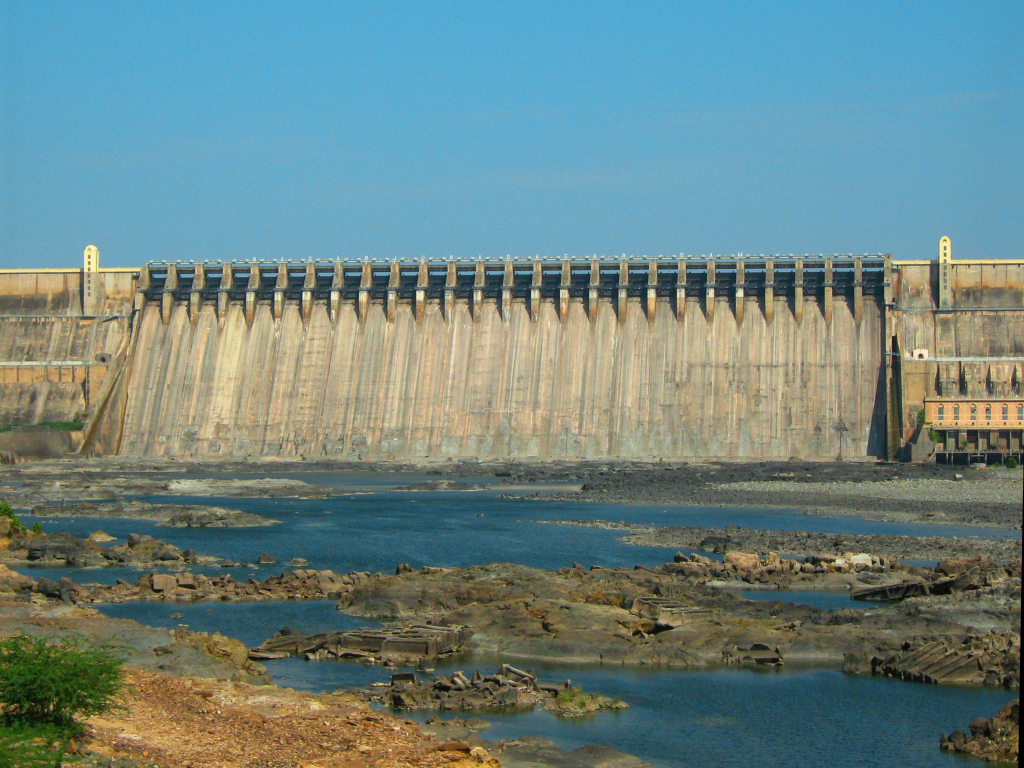Trapped sediment cuts water storage capacity of large dams

United Nations warn that large dams across world are under a serious threat to their water storage capacity due to sedimentation
Even as the world fights a scarcity of water as well as hydropower, a new report by the United Nations warns that on both the counts, large dams around the world face a serious threat due to rising sedimentation.
The report says that trapped sediment has robbed roughly 50,000 large dams worldwide of an estimated 13-19 pc of their combined original storage capacity, and total losses will reach 23-28 pc by 2050, it says.
The report says that the original dam capacity will fall from about 6,300 billion m3 to 4,650 billion m3 in 2050, a difference of 1,650 billion m3 or as much as the annual water use of India, China, Indonesia, France and Canada combined.
According to a press statement, UN University’s Canadian-based Institute for Water, Environment and Health applied previously-determined storage loss rates in various areas worldwide to large dams in 150 countries to forecast cumulative reservoir storage losses by country, region, and globally.
The United Kingdom, Panama, Ireland, Japan and Seychelles will experience the highest water storage losses by 2050, ranging between 35 pc and 50 pc of their original capacities, says the study. By contrast, Bhutan, Cambodia, Ethiopia, Guinea, and Niger will be the five least affected countries, losing less than 15 pc by mid-century.
“The decrease in available storage by 2050 in all countries and regions will challenge many aspects of national economies, including irrigation, power generation, and water supply,” says Duminda Perera, who co-authored the study with UNU-INWEH Director Vladimir Smakhtin and Spencer Williams of McGill University in Montreal. It has been published by the journal Sustainability.
“The new dams under construction or planned will not offset storage losses to sedimentation. This paper sounds an alarm on a creeping global water challenge with potentially significant development implications,” adds Perera.
The researchers applied previously-established storage loss rates worldwide to a subset of nearly 60,000 dams in a database maintained by the International Commission on Large Dams (ICOLD). The subset comprises 47,403 large dams for which original storage capacity and year of construction are known. Of these, 28,045 are in Asia-Pacific, 2,349 in Africa, 6,651 in Europe, and 10,358 in North, Central and South America.
Large dams and reservoirs, that are defined as higher than 15 m, or between 5 and 15 m high impounding over 3 million m3, are essential in many places for hydroelectricity, flood control, irrigation, and drinking water.
River sediment accumulates behind a dam’s barrier. The problem, often ignored, has now become a significant challenge to global water storage infrastructure that must be addressed with a long-term sediment management strategy, says the report.
“Sedimentation is a serious issue that endangers the sustainability of future water supplies for many. It stimulates downstream flooding causing erosion, impacting wildlife habitats and coastal populations. And abrasive sediments can damage hydroelectric turbines and other dam components and mechanisms, decreasing their efficiency and increasing maintenance costs,” says Smakhtin of UNU-INWEH.
The report says that each year, the dams lose about 0.36 pc of their initial capacity, noting that figure may err on the conservative side. Previous attempts to estimate a global annual rate of loss from initial reservoir capacity generally agree on a range between 0.5 pc and 1 pc.
Many other studies suggest, however, that reservoir sedimentation rates and associated storage losses are site-specific and vary significantly between regions.
For example, other researchers have estimated the loss from 190 California reservoirs at more than 50 pc from their original capacities, with 120 reservoirs having lost over 75 pc. A similar study predicted Japan’s Sakuma reservoir will lose around 44 pc of its initial capacity by 2040.
Analysing the situation in each continent, the study says that 16 countries in the America contain 10,358 large dams with an initial storage capacity of 2,810 billion m3 that is foreseen falling by 28 pc to 2,014 billion m3 by 2050. And Panama’s 21 dams appear to be facing the highest storage loss at 38 pc, from an initial 9.5 billion m3 to 5.9 billion m3 by 2050.
Brazil, second after the USA in the Americas in number of large dams, will lose an estimated 23 pc of its initial storage of 600 billion m3 by 2050, it says.









